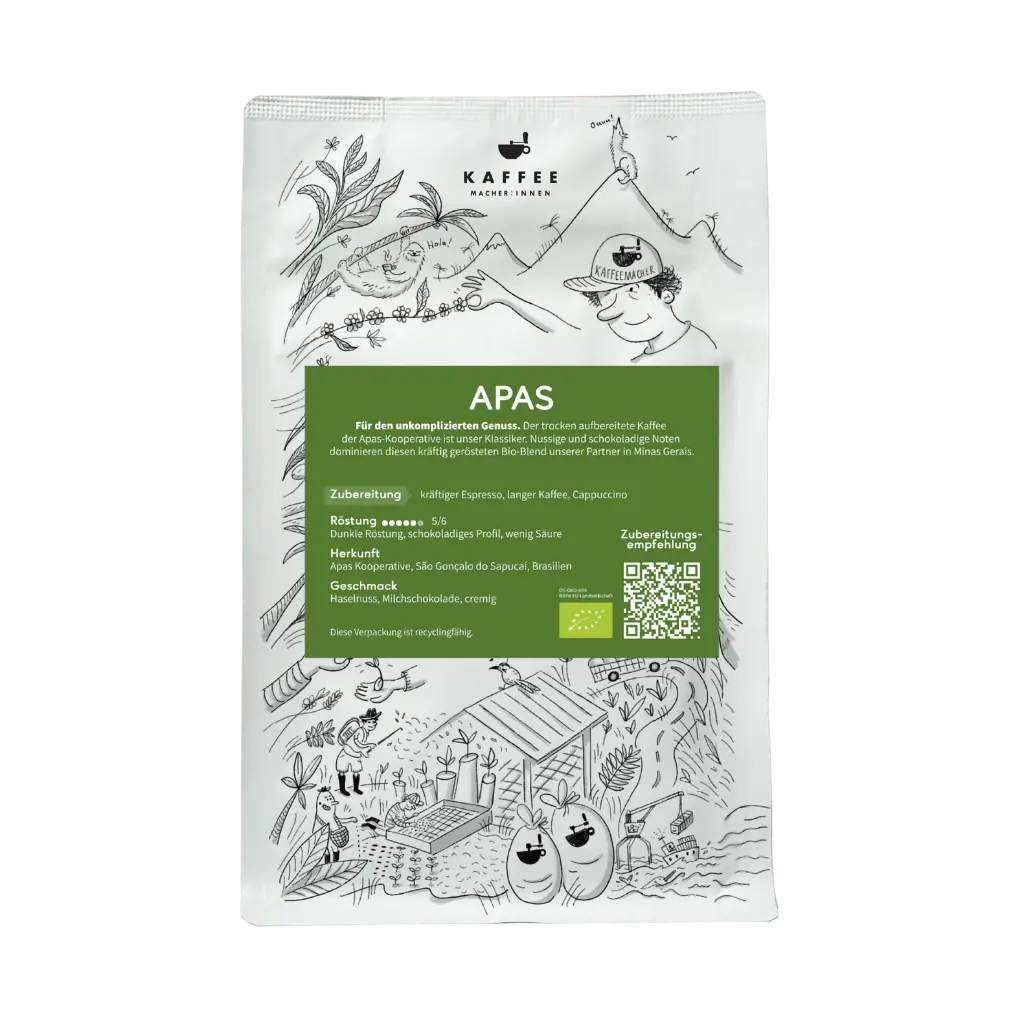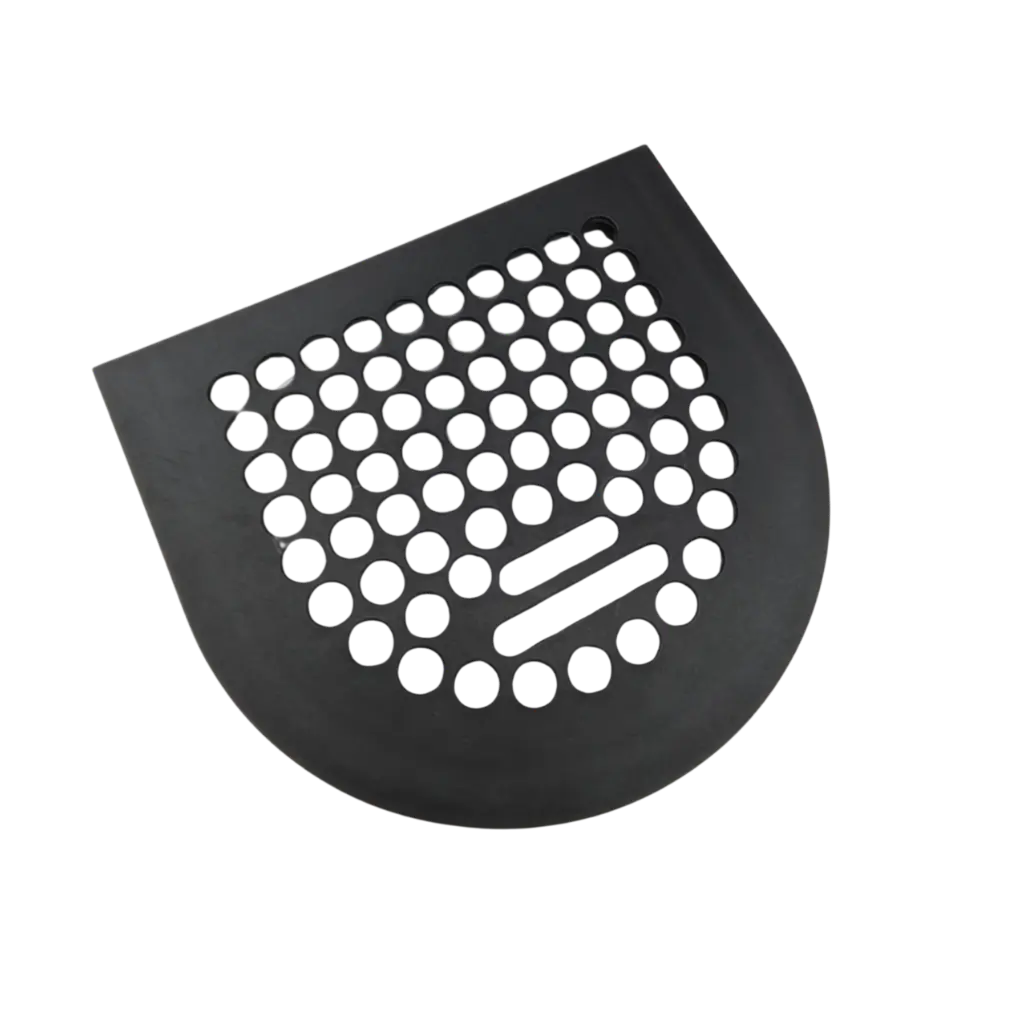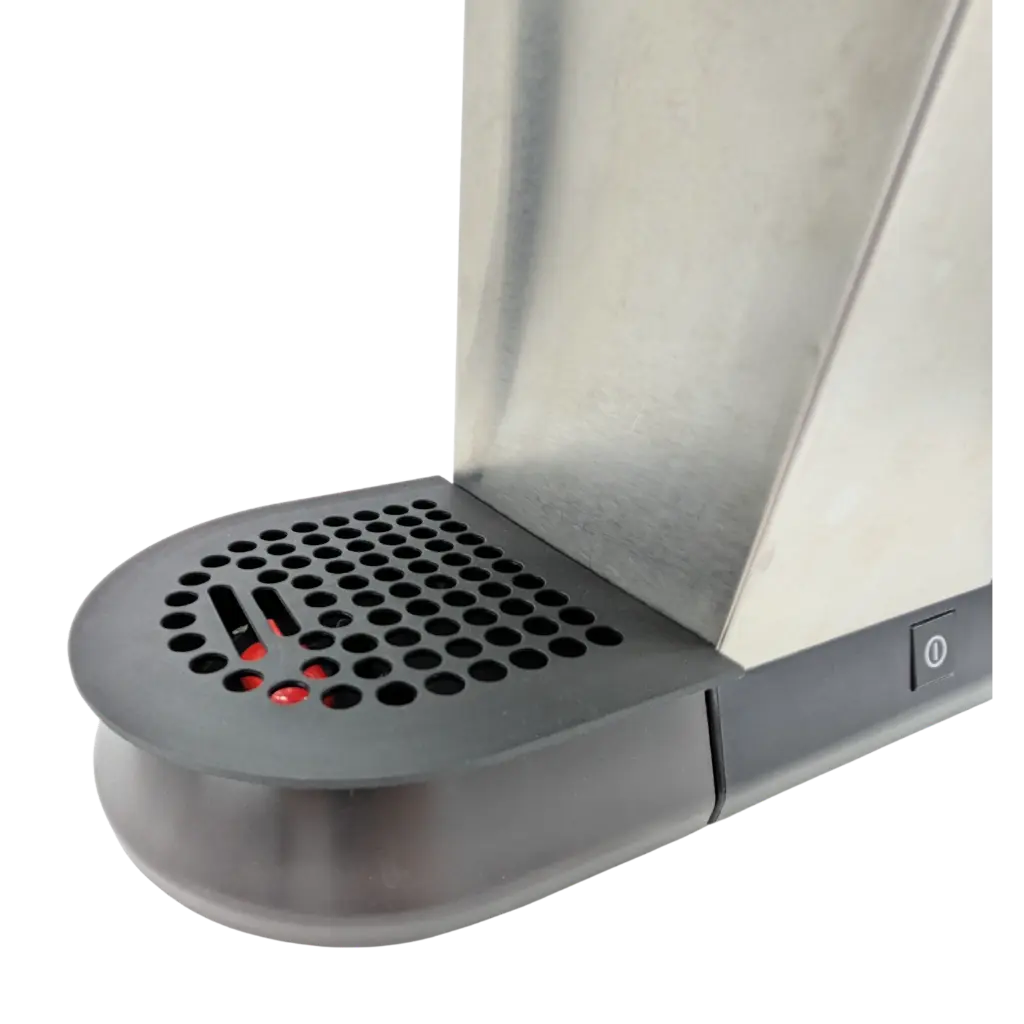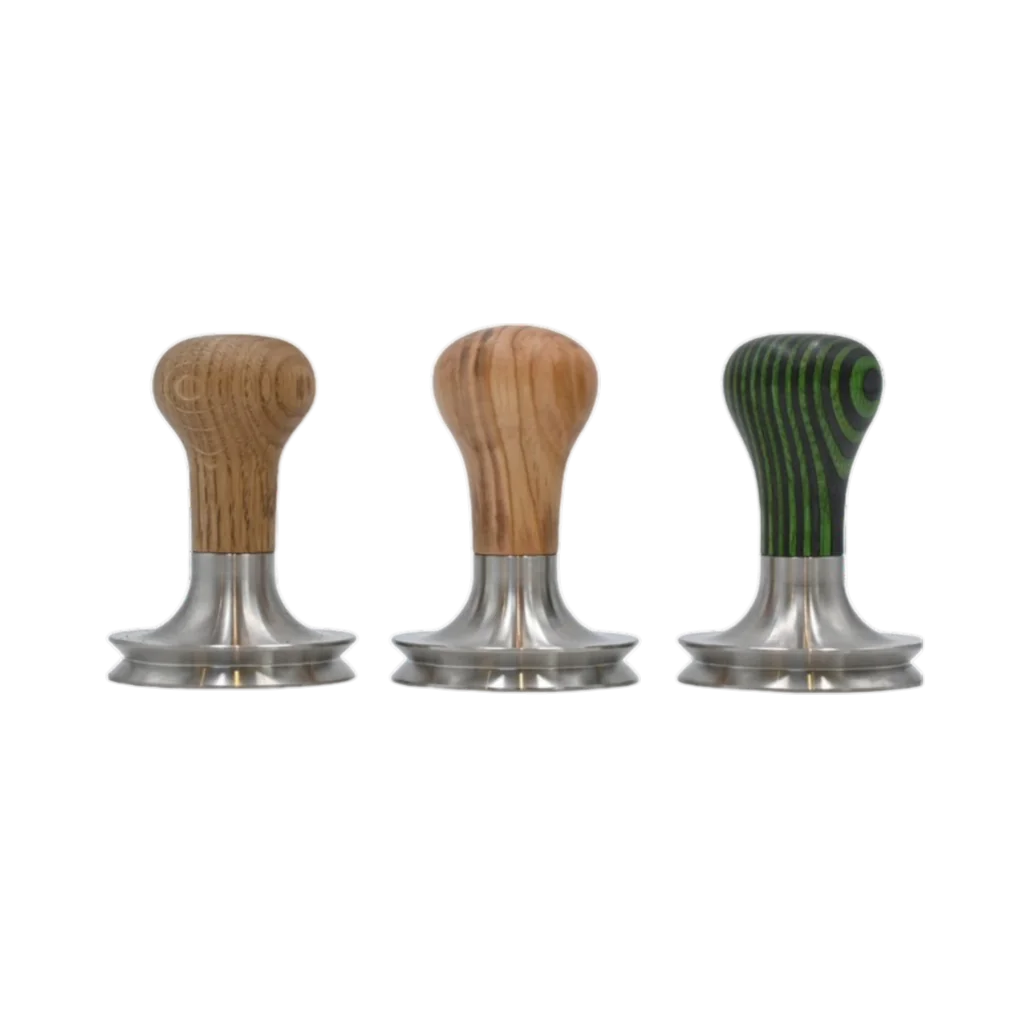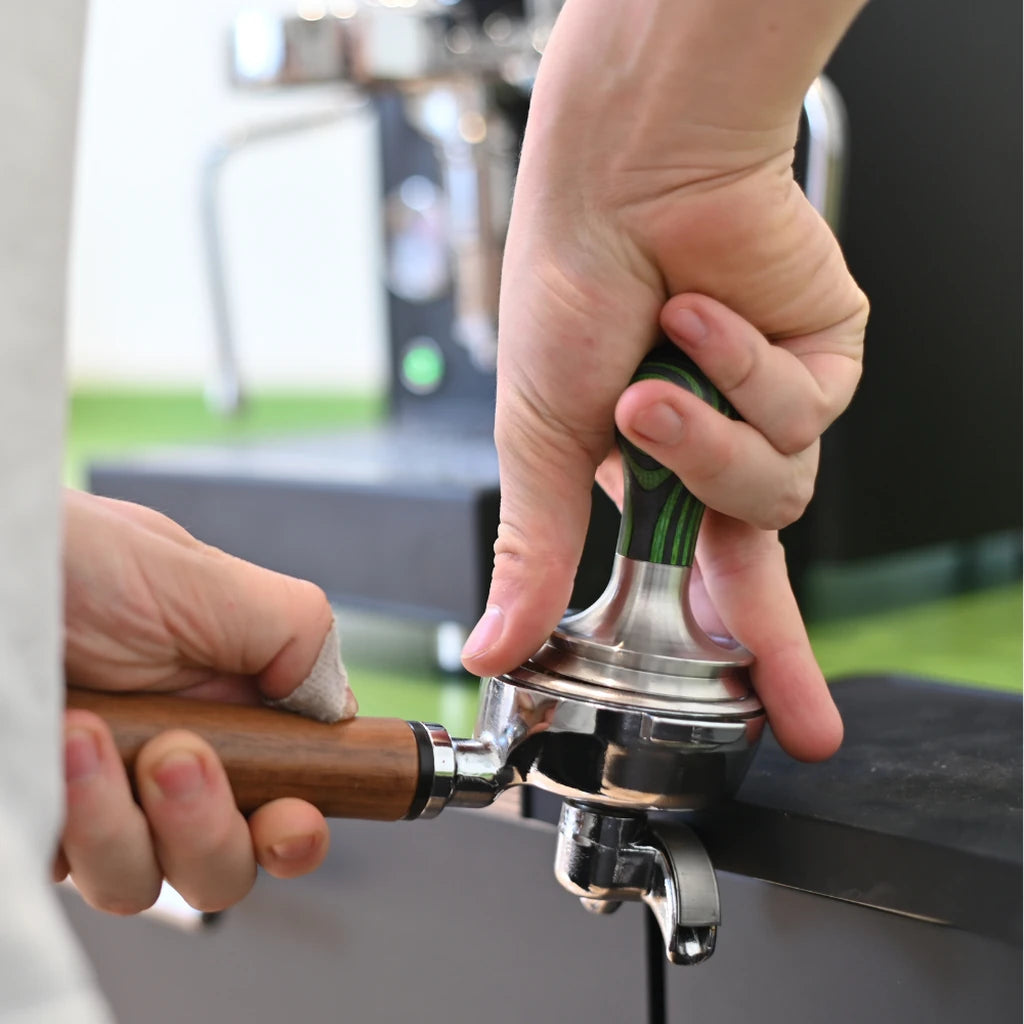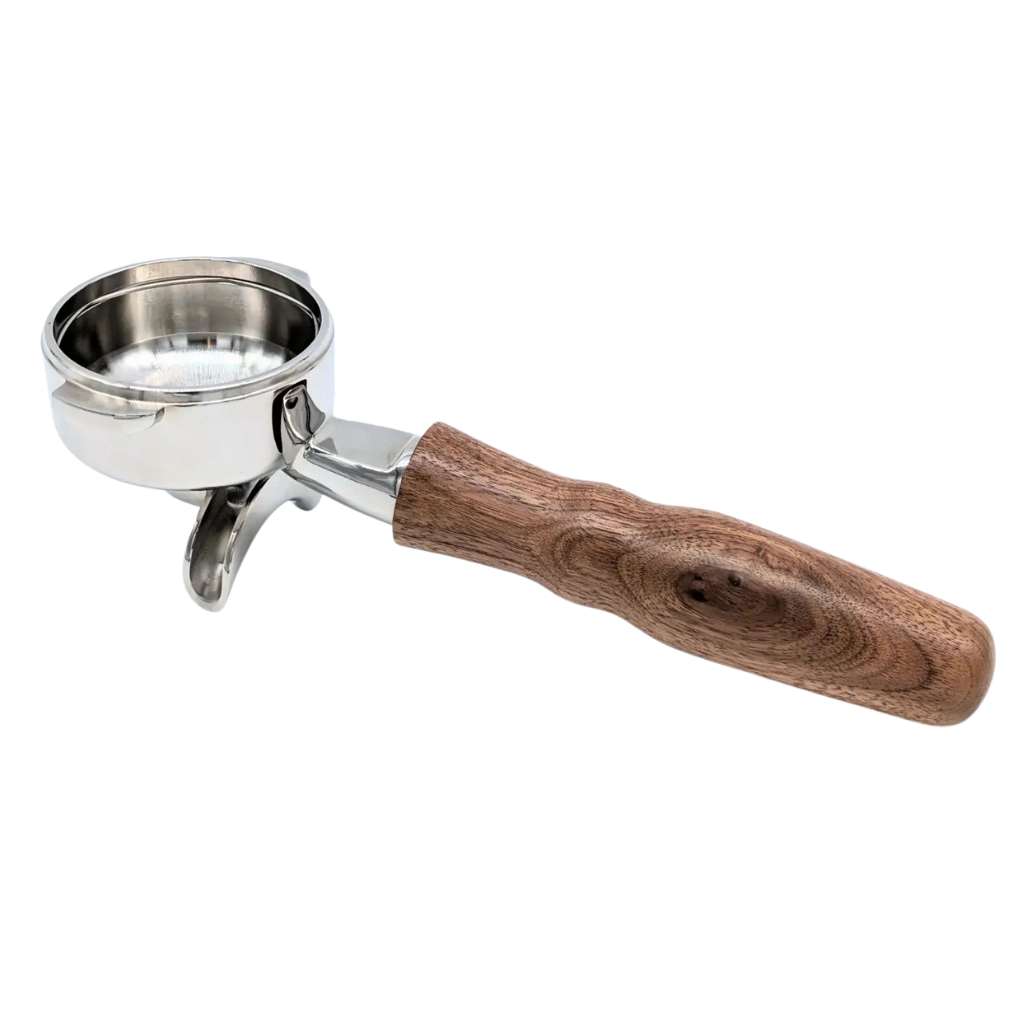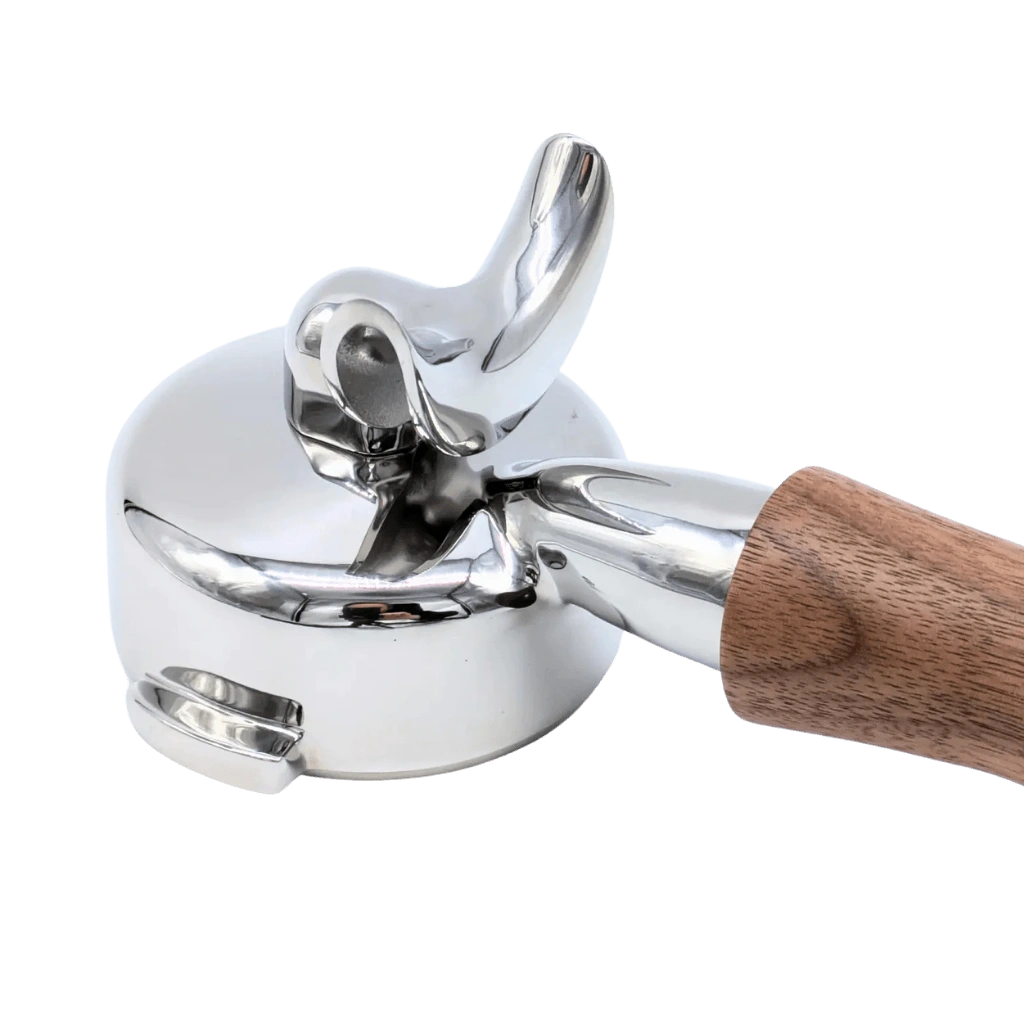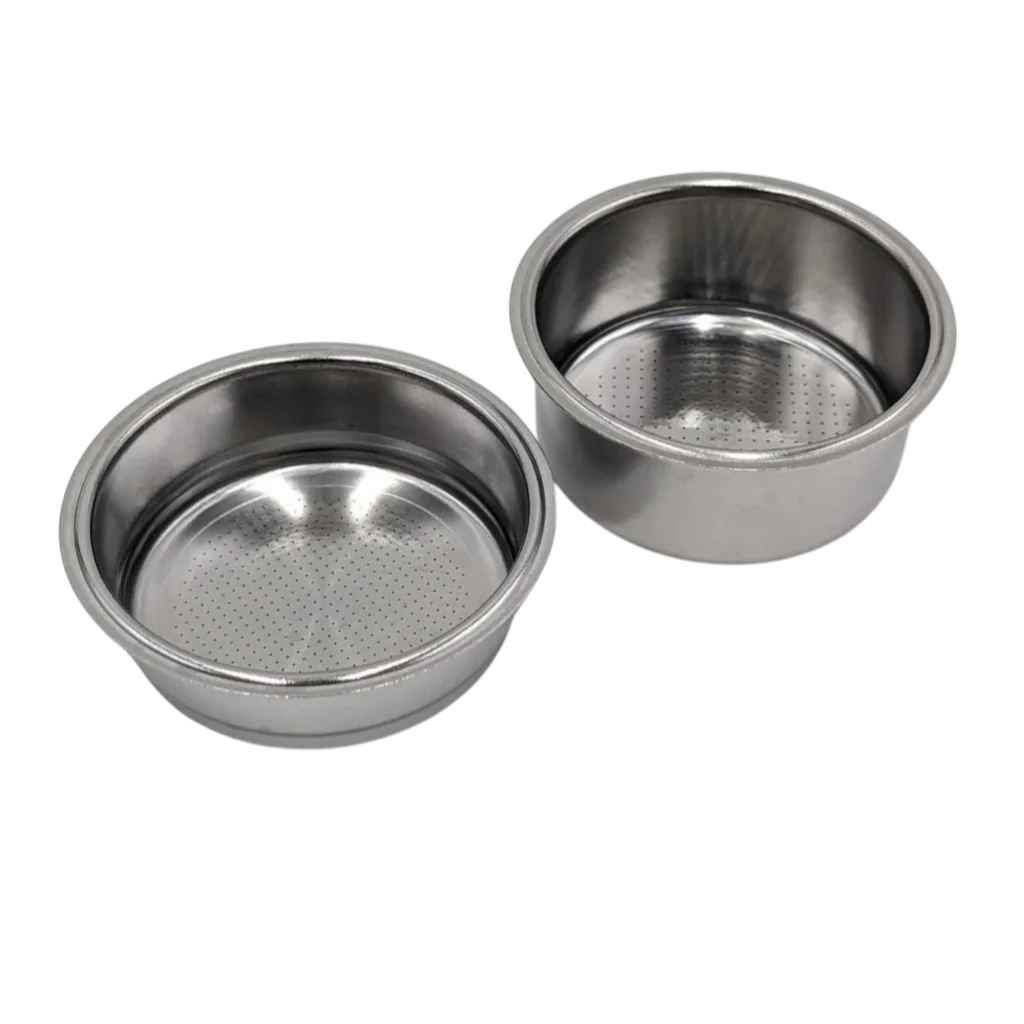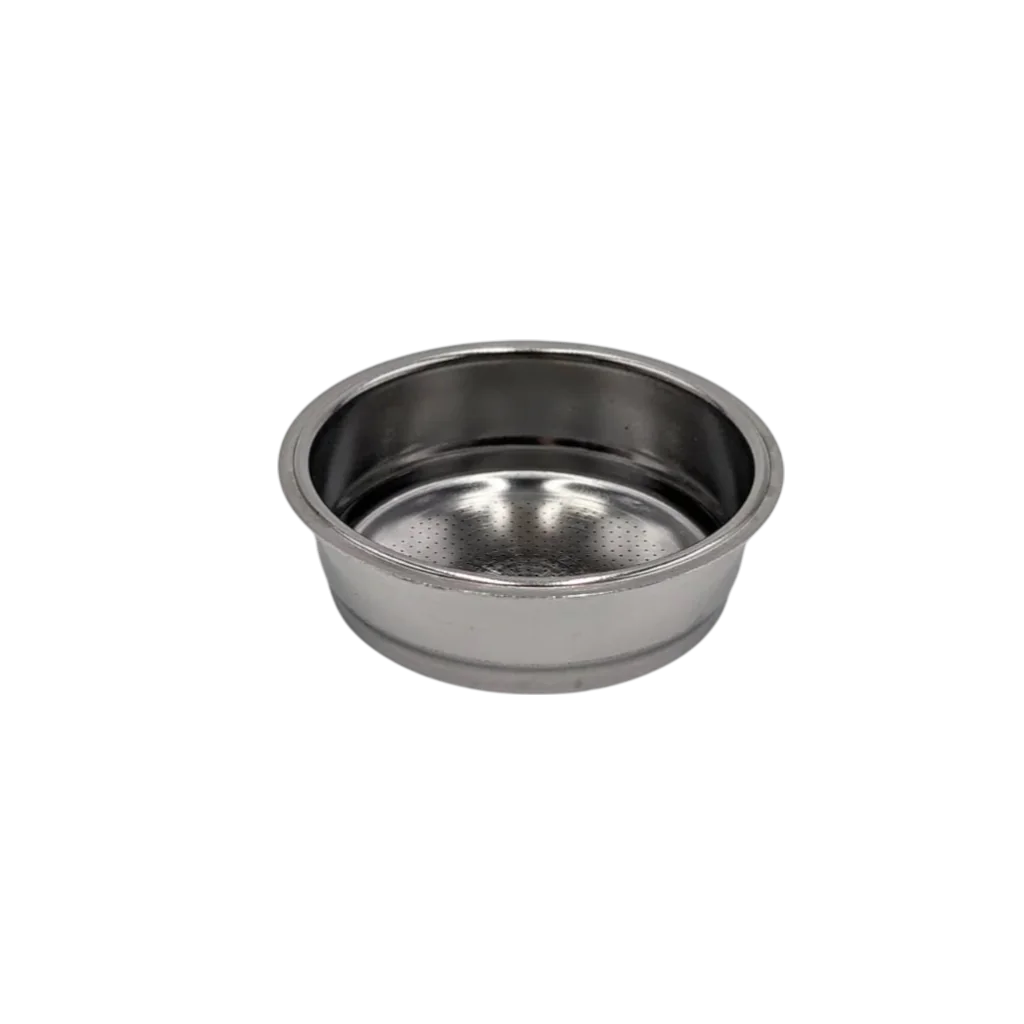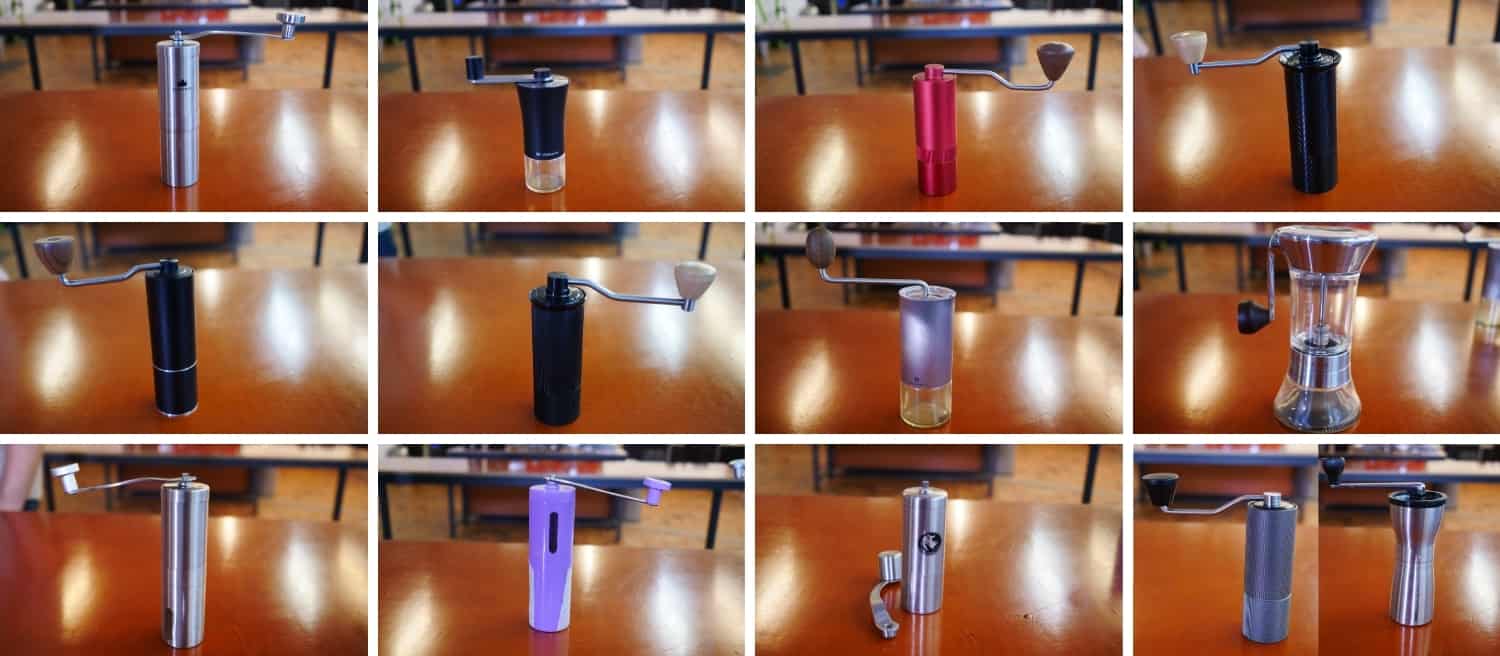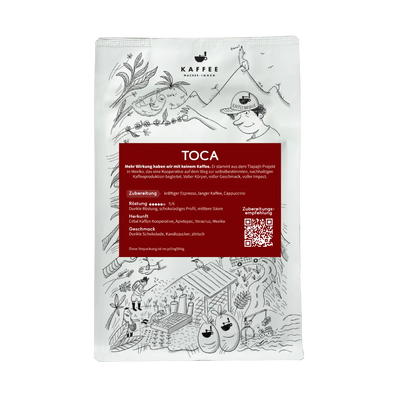Hand coffee grinders offer several advantages over heavy electric coffee grinders. As a portable, lightweight, and handy option, they're the perfect coffee grinder for on the go, whether camping, hiking, or traveling. But there's another important argument in favor of hand grinders: some models are available for under €100 that produce relatively even ground coffee.
Suitable for filter coffee and espresso?
While many hand grinders do a good job with filter coffee, hardly any can grind to espresso fineness. Most electric grinders also fail in this area. The grind for espresso is so fine that it places considerable demands on the material. This pushes inexpensive grinders to their limits, as does the power source—in this case, the motor or the person operating the hand grinder.
The ground coffee should not only be espresso-fine, but also free of larger particles and lumps. These create holes under the pressure of the brewing water during espresso, allowing it to flow through more quickly and thus resulting in uneven extraction. That's not tasty!
First of all: four coffee grinders under 100 euros also passed the espresso test in our test, some of them even quite well.
Why hand mills make sense
We're often asked how to improve coffee quality at home. The first answer is simple: freshly grind the coffee. Freshly ground coffee is the first prerequisite for brewing good coffee. It doesn't matter whether you're making filter coffee or espresso.
After grinding, the coffee has a surface area that is many times larger. As a result, many of the coffee's most interesting aromas evaporate just a few minutes after grinding. Furthermore, the surface area of the coffee bean is greatly enlarged, allowing oxygen and light to easily reach the ground coffee. As a result, the oils present in the coffee oxidize more quickly.
This is the reason why pre-ground coffee often tastes rancid and lacks complexity. This is why purchasing a coffee grinder is so worthwhile. A hand grinder not only does a great job, it's also significantly cheaper than an electric one.
Amazingly enough, many inexpensive hand mills do a better job than some electric mills that cost over a hundred euros.
The basic data of the hand mills
Felix Hohlmann conducted the technical inspections and tests. Did he know what he was getting into with this test? There are actually quite a few things to compare when testing hand-held coffee grinders. This starts with the maximum bean capacity at the top, continues with the capacity of the grounds collection chamber, and ends with the material properties, the grinder mechanism, and the adjustability. And of course, the machines also had to perform their duties as filter and espresso grinders.
The following table summarizes the most important basic data.
| Test No. | Mill name | Approx. price (seen for) | grinder | Steps | material |
|---|---|---|---|---|---|
| 1 | VIENESSO hand coffee grinder | 24,90 € | Steel (not fixable) | no | stainless steel |
| 2 | Groenenberg coffee grinder | 25.00 € | Ceramics | Yes | stainless steel |
| 3 | Zassenhaus Buenos Aires | 30,99 € | Ceramics | Yes | Lots of plastic – little metal |
| 4 | NITRIP Easy Clean Red | 72,49 € | Steel, good click system | Yes | stainless steel |
| 5 | Manual coffee grinder yobaih | 67.24 € | Steel, good click system | Yes | stainless steel |
| 6 | WishY Manual Coffee Grinder | 84.03 € | Steel, good click system | Yes | stainless steel |
| 7 | Nitrip Household Mini Black | 50.09 € | Steel, good click system | Yes | stainless steel |
| 8 | Zassenhaus Quito | 79,90 € | Steel, good click system | Yes | stainless steel |
| 9 | Handground | 89.99 € | Ceramics | 8 steps | Plexiglass, stainless steel, glass |
| 10 | innislink Manual Coffee Grinder | 14,00 € | Ceramics | Yes | stainless steel |
| 11 | AXspeed coffee grinder | 14.99 € | Ceramics | no | plastic |
| 12 | Rhinoware's small one for Aeropress | 46.42 € | Ceramics | no | stainless steel, plastic |
| 13 | Hario Ceramic Coffee Mill Mini-Slim Pro | 49.99 € | Ceramics | Yes | stainless steel |
| 14 | Timemore c2 | 79,00 € | Steel, good click system | Yes | stainless steel |
Here are a few notable features. The Handground grinder is by far the largest grinder in the field. With a capacity of 85 grams in the upper chamber and 60 grams in the grounds compartment, it's also anything but a good travel companion, especially since the grounds container is made of glass.
The smallest grinder is the Nitrip Mini Black, measuring 14 cm and 5 cm in diameter. With a capacity of just 19 grams for both beans and ground coffee, it grinds just enough coffee to brew a double espresso or 300 grams of filter coffee.

The three test winners of the hand mill test
Four grinders are suitable for grinding both filter coffee and espresso, setting them apart from the other grinders. However, if you're only looking for a filter coffee grinder, you'll also find good models among the other grinders.
Of the four grinders, we can recommend three without reservation. The Nitrip Mini Black , the Nitrip Easy Clean Red hand grinder, and the Timemore C2 performed strongly in many respects.
The Grøneberg Mill * It costs just €25 and is the best of the very affordable grinders under €30. However, it leaves something to be desired in terms of workmanship and operation. If you're looking for a price-performance test winner, then for us it's the Nitrip Mini Black *. It costs around €50, but scores highly for both its material quality and its ease of use.
Nitrip Easy Clean Red – top espresso, high-quality construction and a visual eye-catcher
The red Nitrip Easy Clean Red stands out visually among the 14 grinders tested. A closer look reveals astonishingly high-quality workmanship. The entire grinder is made of metal, and at 500 grams, the hand grinder is one of the heavier grinders in the field. With a 25-gram capacity in both the bean hopper and the ground coffee hopper, the grinder is an ideal size for a hand grinder. This allows for a double espresso (approx. 18 grams of coffee beans) to be poured in just as easily as a 400 ml filter coffee (24 grams of coffee). The grinder's axis is supported by multiple bearings, and the guide is also made of metal. The wooden handle has a fine grain and feels nicer than the handles of the other coffee grinders in the field.

The steel grinder can be precisely adjusted with clicks. In our test, we ground 19 grams of coffee each and compared the grinding times of the grinders. The Nitrip Easy Clean Red finished the second fastest at 35 seconds at a normal "hand grinding speed."
We obtained good filter coffee and the tastiest espresso in the field with the Nitrip Easy Clean Red. However, the espresso rating shouldn't be overstated. We set the grinder to 10 clicks, which allows for further adjustments in both the coarse and fine ranges. However, the extraction times jump by a few seconds, making it almost impossible to perfectly adjust the grinder using the grind size alone. This is a general disadvantage of hand grinders, and it's hardly significant, especially when the extraction is as perfect as in our case.
There's actually only one criticism of the Nitrip Easy Clean Red. The lid of the coffee grinder falls off a little too easily. The principle of its smaller sister grinder, the Nitrip Mini Black, would have been better.
When we bought the Nitrip Easy Clean, it cost €55. Currently, we've seen it for between €70 and €80. We'll keep an eye out and link back if it comes up. We'll also try to locate the manufacturing factory and, if not, bring the grinder to the European market ourselves.

Timemore C2
We're honestly glad that the Timemore C2 hand grinder is among the top three in the field. Timemore is a true coffee material manufacturer, while Nitrip also offers coffee pads and fire extinguishers. Timemore, for example, has one of the smartest scales on the market with a dual weighing function.
The Timemore delivers a very solid performance, producing one of the best filter coffees in the field and also grinding to espresso fineness. The grinder is made of stainless steel, and the shaft is mounted on multiple bearings. At 465 grams and 15.7 cm tall, the grinder is one of the more powerful and heavy hand grinders in the field.
The bean capacity is 21 grams, and the ground coffee hopper holds 27.5 grams. Like the Nitrip Easy Clean Red, the Timemore C2 also has a "cover falling off" issue. It lacks a magnet or other locking feature.
The steel grinder is adjustable in steps and feels high-quality and sharp. We measured 25 clicks for filter coffee and 13 clicks for espresso. The Timemore C2 was the fastest among the 14 grinders. It ground 19 grams in about 30 seconds. The grinder has obviously changed since then, however, as the grinder takes much longer to grind finer espresso.
The Timemore C2 features a ribbed outer texture that facilitates a firm grip and prevents the grinder from slipping. The grinder's circumference is comfortable even for smaller hands.
We have seen the Timemore C2 online for prices between 79 and 85 euros.
Disclaimer and note: We now offer the Slim Plus from Timemore . This grinder is even better for espresso. Especially since the C2 now seems to have a different grinder and doesn't grind nearly as fast as in our original test.

Nitrip Mini Black
The Nitrip Mini Black * hand grinder has only one complaint: it can't hold more than 18 grams of coffee in either the bean hopper or the ground coffee compartment. However, if you're using the grinder primarily for personal use or as a companion for hikes or travels, the Nitrip Mini Black is a great choice.
This mill, too, is mounted on multiple bearings in a metal frame. The mill weighs 290 grams and measures 14 cm tall with a diameter of 5 cm. This makes it the smallest and most manageable mill in the field. The fine grooves in the body make it easy to grip and prevent it from slipping out of your hand.
Unlike the first two grinders, the Nitrip Mini Black doesn't constantly lose its lid. It clicks securely into place and stays in place even when the grinder is turned upside down. The wooden knob is held securely to the grinder handle by a magnet. This also makes a high-quality, well-made impression.
Like the other two grinders, the Nitrip Mini Black is also ideal for brewing filter coffee and espresso. Since this small grinder is also ideal for mobile brewing, we prepared an espresso with the Flair . Very practical – the bean hopper fits perfectly into the brewing chamber. Adding the ground coffee was therefore very easy.
We set the grinder to 23 clicks for filter coffee and 11 clicks for espresso (10 clicks for the Flair). Incidentally, the grinder ground 19 grams in 35 seconds, making it one of the fastest grinders.
At around 50 euros, the Nitrip Mini Black was the cheapest of the three best grinders and is therefore also our price-performance test winner.
How to adjust hand mills using «clicks»
Once you've found the right grind for filter coffee, you only need to adjust the grinder if you use completely different roasts or coffees. This might be the case, for example, when switching from a lighter roast to a darker roast. In everyday life, only minimal adjustments are usually necessary for filter coffee, as the strength and extraction can also be controlled through swirling and dosage. More precise adjustment is important for a good espresso setting.
If a grinder is adjustable in steps and has a click grid, this greatly simplifies the setting. Above all, it's easy to return to the original grind setting. When the grinder is adjusted by one setting, you'll hear a click. The zero point is when the grinder is completely closed (the conical grinder is completely retracted). From there, you count down to the correct grind setting. For example, we set the Timemore C2 to 25 clicks to grind filter coffee. For espresso, our grinder was set to 13 clicks.
Grinders with a “click” feature allow you to jot down recipes, change coffees, and return to your previous grind size.
Advantages and disadvantages of steps and stepless guidance in hand mills
Very good professional grinders are either stepless or have very finely spaced increments. Stepless grinders allow for the most precise adjustment because the setting isn't tied to a specific increment. Examples include the EK43 or Niche Zero, both grinders that can be used for both filter coffee and espresso. These grinders can be quickly adjusted from fine to coarse, with the smallest possible increments, thanks to a marked increment.
With grinders with steps, the adjustment is always tied to a grid. If the steps are very small, this grinder can also be adjusted very precisely. However, for espresso, a stepless grinder is generally preferred.
When it comes to hand mills, mills with steps have advantages. This is primarily because the adjustment screw is turned fully several times when adjusting the hand mill. With stepless mills, you simply don't know where you are in the adjustment unless you can count the mill clicks. Theoretically, a stepless mill can be adjusted more precisely, even with hand mills. However, orientation is so difficult that we clearly recommend mills with steps and clicks for hand mills.
Commission links with asterisks
Links with an asterisk are affiliate links. If you purchase a grinder through these links, you support our work. The grinder doesn't cost you any more, and we fill our test machine fund. However, if possible and available, we always recommend purchasing a grinder locally from a small retailer or roastery. They can provide you with direct advice and you'll have a contact person in the future. If a grinder is only available on Amazon and you buy it there, we'd be delighted if you purchased it through our link. Thank you!
![]()



